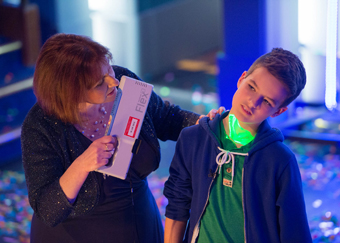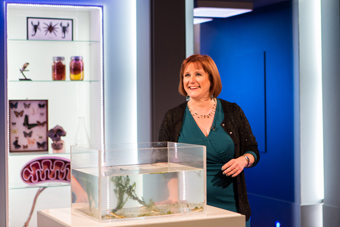
Life is the greatest show on Earth from the lowliest worm to the mightiest mammal. Yet from the moment of conception, to the formation of limbs, to the development of brains there’s something that all living things depend on: cells. Cells grow, multiply, change, move, communicate and ultimately die. They are the very essence of life, but how do they work together to form it? Gradually we are beginning to unravel their secrets. Life is fantastic and full of questions, but as we reveal the answers more questions emerge.
The 2013 Christmas Lectures presented by Dr Alison Woollard from the University of Oxford, explores the frontiers of developmental biology and uncover the remarkable transformation of a single cell into a complex organism. What do these mechanisms tell us about the relationships between all creatures on Earth? And can we harness this knowledge to improve or even extend our own lives?

Your life stems from a single cell. Yet within the trillion of cells that make up your body lies a fundamental conundrum. Each cell contains identical DNA, yet muscle cells are very different from skin cells; blood cells are very different from brain cells. How does each of your cells ‘know’ exactly what to do? And when? And where? How do your heart cells start beating? How can your eye cells help you see the world around you? Can we use our understanding of how stem cells transform into specialised cells to build new body parts? What can we learn from animals that can regenerate their limbs? And what are the implications of tinkering with the fabric of life?

Yes. But so am I. And so is the mouse that we share 99% of our genes with. As our DNA replicates, mutations arise. Sometimes they can be catastrophic, but sometimes they confer a huge advantage. Falcons have eyes that allow them to see for miles, but ants are virtually blind. How come? How are developmental processes altered over evolutionary time to produce novel structures and, ultimately, new species? The history of life revolves around survival of the fittest ‘mutant’. As we understand more about mutations it could help us devise new treatments for genetic conditions. But are we prepared to genetically engineer humans?

There’s one certainty in life: death. Every living thing – all creatures great and small - eventually die. But why? How do cells know when to stop living? What happens when they age? And are there ways of halting that process? Perhaps it might even be possible to live forever.
Dr Alison Woollard from the University of Oxford, tackles a question that has intrigued scientists and natural philosophers for centuries. The cycle of life and death affects all cells, but Alison reveals a shocking truth – that ‘cell death’ plays an important part in life. It enables the development and survival of most multi-celled organisms from hedgehogs to humans.
Why does a mayfly’s life last just a few minutes – whereas an elephant can live for 80 years? Developmental biology and genetics give us new insights into how cells work and how we can use this knowledge to improve or even extend our lives. Some animals, like the naked mole rat, are well on the way.
In this lecture Alison will artificially ‘age the audience’ using a sophisticated computer program. She meets a patient who has had their eyesight restored with cutting-edge stem cell therapy.
Joining Alison to discuss the serious ethical implications of such medical and scientific advances will be Lord Winston. They will confront the potential dangers of tinkering with evolution. Where do we draw the line in manipulating our own genes?
Having confronted the question of whether we could live forever, another very real issue emerges… Even if it was possible to live forever, what kind of life would that be? Would we really want to live forever?
| Executive Producer | David Dugan |
| Series Producer | Johanna Woolford Gibbon |
| Director | David Coleman |
| Assistant Producer | Kimberly Bartholomew |
| Production Manager | Victoria Wilson |
| Reseracher | Kiki Lawrance , Lin Lin Ginzberg |
| Production Coordinator | Laura Blackburn |